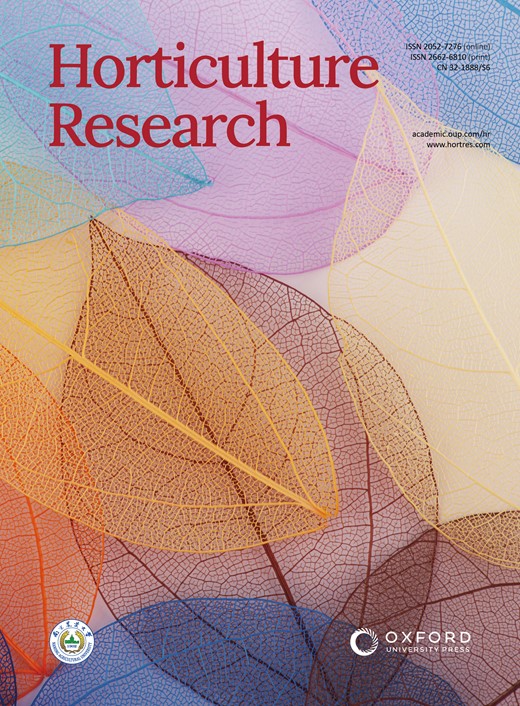Genomic selection and genetic architecture of agronomic traits during modern flowering Chinese cabbage breeding
IF 8.7
1区 农林科学
Q1 Agricultural and Biological Sciences
引用次数: 0
Abstract
Flowering Chinese cabbage is a type of leafy vegetable that belongs to the Brassica genus. Originally native to South China, it is now widely cultivated and consumed across the globe, particularly in Asian countries. The recent cultivation and regional expansion of flowering Chinese cabbage provides a valuable opportunity to elucidate the genomic basis underlying environmental adaptation and desired traits during a short-term artificial selection process. Here, we investigate the genetic variation, population structure, and diversity of a diverse germplasm collection of 403 flowering Chinese cabbage accessions. Our investigation seeks to elucidate the genomic basis that guide the selection of adaptability, yield, and pivotal agronomic traits. We further investigated breeding improvement associated with stem development by integrating transcriptome data. Genome-wide association analysis identified 642 loci and corresponding candidate genes associated with 11 essential agronomic traits, including plant architecture and yield. Furthermore, we uncovered a significant disparity in the allele frequency distribution of non-synonymous mutations in these candidate genes throughout the improvement stages. Our results shed light on the genetic basis of improvement and crucial agronomic traits in flowering Chinese cabbage, offering invaluable resources for upcoming genomics-assisted breeding endeavors.现代开花大白菜育种过程中的基因组选择和农艺性状的遗传结构
开花大白菜是芸薹属的一种叶菜。它最初原产于华南地区,目前在全球范围内广泛种植和食用,尤其是在亚洲国家。近年来,开花大白菜的种植和区域扩张为在短期人工选择过程中阐明环境适应性和理想性状的基因组基础提供了宝贵的机会。在此,我们研究了由 403 个开花大白菜品种组成的多样化种质收集的遗传变异、种群结构和多样性。我们的调查旨在阐明指导适应性、产量和关键农艺性状选择的基因组基础。通过整合转录组数据,我们进一步研究了与茎秆发育相关的育种改良。全基因组关联分析确定了与植物结构和产量等 11 个基本农艺性状相关的 642 个位点和相应的候选基因。此外,我们还发现这些候选基因在整个改良阶段的非同义突变等位基因频率分布存在显著差异。我们的研究结果揭示了开花大白菜改良和关键农艺性状的遗传基础,为即将开展的基因组学辅助育种工作提供了宝贵的资源。
本文章由计算机程序翻译,如有差异,请以英文原文为准。
求助全文
约1分钟内获得全文
求助全文
来源期刊

Horticulture Research
Biochemistry, Genetics and Molecular Biology-Biochemistry
CiteScore
11.20
自引率
6.90%
发文量
367
审稿时长
20 weeks
期刊介绍:
Horticulture Research, an open access journal affiliated with Nanjing Agricultural University, has achieved the prestigious ranking of number one in the Horticulture category of the Journal Citation Reports ™ from Clarivate, 2022. As a leading publication in the field, the journal is dedicated to disseminating original research articles, comprehensive reviews, insightful perspectives, thought-provoking comments, and valuable correspondence articles and letters to the editor. Its scope encompasses all vital aspects of horticultural plants and disciplines, such as biotechnology, breeding, cellular and molecular biology, evolution, genetics, inter-species interactions, physiology, and the origination and domestication of crops.
 求助内容:
求助内容: 应助结果提醒方式:
应助结果提醒方式:


